Boys in Glass Houses – Taking on the Mannerisms of Men
07 February 2012 (R•090115)
![]() As I sometimes contently watch my grandson Nicholas (9 years old this month) playing his video games, riding his ATV and taking on the challenges of school and growing up, I remember that our country has made great strides in child labor laws and it wasn’t too long ago that children had many more responsibilities than they do today.
As I sometimes contently watch my grandson Nicholas (9 years old this month) playing his video games, riding his ATV and taking on the challenges of school and growing up, I remember that our country has made great strides in child labor laws and it wasn’t too long ago that children had many more responsibilities than they do today.
“boys taking on the mannerisms of men”
In researching glass houses and factories, I am astounded by the working conditions that these young lads and lasses had to endure. I also smile inwardly, but with trepidation, that most children don’t even understand the concept of working. Even Nicholas tires after 15 minutes of yard work!
I’ve posted some pictures and information to support my point.
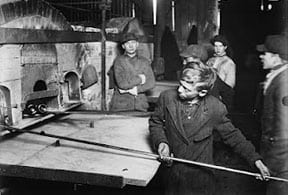 As the US industrialized, factory owners hired young workers for a variety of tasks. Especially in textile mills, mines and glass factories, children were often hired together with their parents. Many families depended on the children’s labor to make enough money for necessities.
As the US industrialized, factory owners hired young workers for a variety of tasks. Especially in textile mills, mines and glass factories, children were often hired together with their parents. Many families depended on the children’s labor to make enough money for necessities.
Like other developed countries, the United States has labor laws that protect children from being exploited in the workplace. But this has not always been the case.
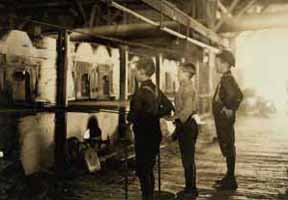 In the 19th and early 20th centuries, children were seen as a cheap labor source, and to help out their families financially, many children were forced to work in factories, mines, and elsewhere, under dirty and dangerous conditions, for very low wages.
In the 19th and early 20th centuries, children were seen as a cheap labor source, and to help out their families financially, many children were forced to work in factories, mines, and elsewhere, under dirty and dangerous conditions, for very low wages.
The National Child Labor Committee, an organization dedicated to the abolition of all child labor, was formed in 1904. By publishing information on the lives and working conditions of young workers, it helped to mobilize popular support for state-level child labor laws. These laws were often paired with compulsory education laws which were designed to keep children in school and out of the paid labor market until a specified age (usually 12, 14, or 16 years.)
“these are not GAP Kids”
In 1914 the Arkansas State Federation of Labor placed a child welfare initiative on the ballot prohibiting child labor, which the voters passed.
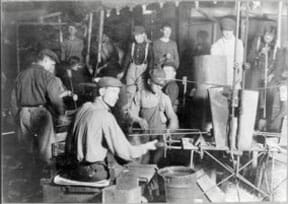 In 1916, the NCLC and the National Consumers League successfully pressured the US Congress to pass the Keating-Owen Act, the first federal child labor law. However, the US Supreme Court struck down the law two years later in Hammer v. Dagenhart (1918), declaring that the law violated a child’s right to contract his or her own labor. In 1924, Congress attempted to pass a constitutional amendment that would authorize a national child labor law. This measure was blocked, and the bill was eventually dropped.
In 1916, the NCLC and the National Consumers League successfully pressured the US Congress to pass the Keating-Owen Act, the first federal child labor law. However, the US Supreme Court struck down the law two years later in Hammer v. Dagenhart (1918), declaring that the law violated a child’s right to contract his or her own labor. In 1924, Congress attempted to pass a constitutional amendment that would authorize a national child labor law. This measure was blocked, and the bill was eventually dropped.
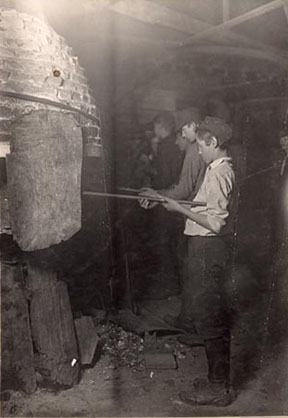 It took the Great Depression to end child labor nationwide; adults had become so desperate for jobs that they would work for the same wage as children In 1938, President Franklin D. Roosevelt signed the Fair Labor Standards Act, which, among other things, placed limits on many forms of child labor.
It took the Great Depression to end child labor nationwide; adults had become so desperate for jobs that they would work for the same wage as children In 1938, President Franklin D. Roosevelt signed the Fair Labor Standards Act, which, among other things, placed limits on many forms of child labor.
Even my design studio in downtown Houston, was at one time the Texas and then Eller Wagon Works. The companies originally occupying our building built Transport Tank Wagons and Carriages prior to the automobile and truck industry. The completed wagons would be loaded on rail cars in from of our building on Commerce Street and shipped to their final order destination. The working conditions in our building were crude at best. Some of our historic pictures of our space are amazing. See FMG Studio Tour
“I’ve posted somer pictures and information to support my point”
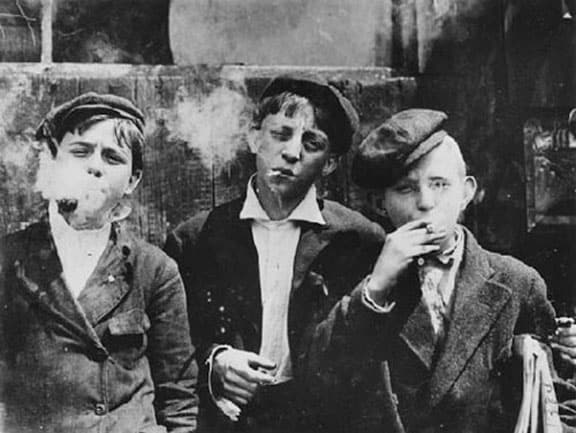
1910 photograph by Lewis W. Hine. The photo was taken in regards to Child Labor Laws, you can see these boys taking on the mannerisms of men.
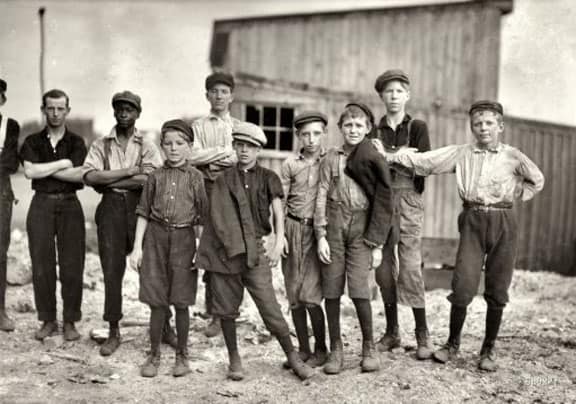
June 1911. Alexandria, Virginia. “Old Dominion Glass Co. A few of the young boys working on the night shift at the Alexandria glass factory. Negroes work side by side with the white workers.” Photograph by Lewis Wickes Hine.
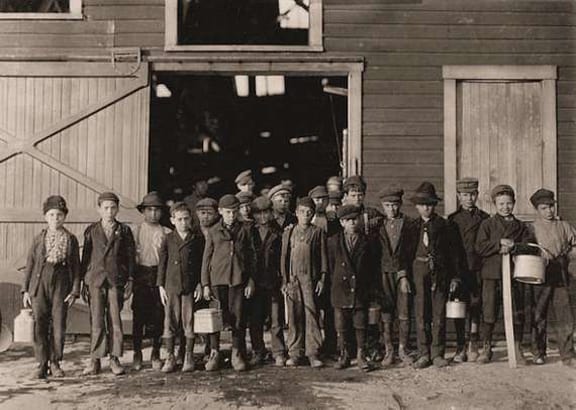
After a long day, a group of boys going home from the Monougah Glass Works At 5 p.m. One boy remarked, “De place is lousey wid kids.” Fairmont, West Virginia.
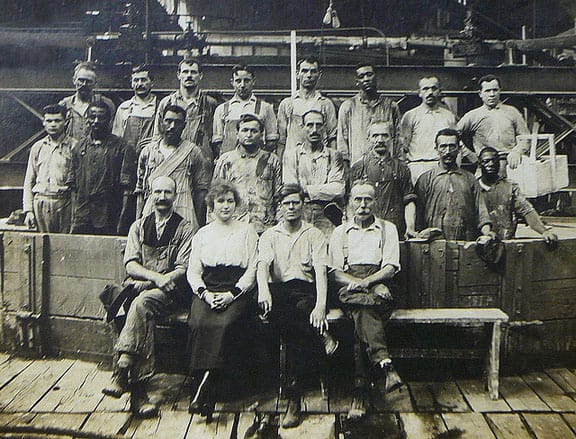
Circa 1910 glass factory in Charleroi, a town founded by Belgium and French immigrants along the Monongahela River in Southwestern Pennsylvania in 1890.
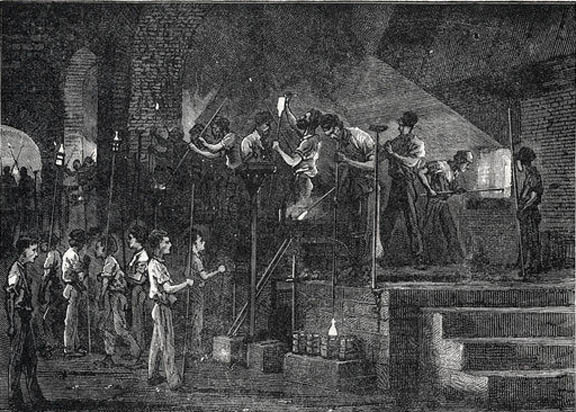
Glass bottle production. Historical artwork of children working alongside adults in a glass bottle factory. The glass is heated by the furnace (right) until it is molten, then the hot glowing glass is blown and moulded (centre right) into a bottle. Image taken from Grands Hommes et Grands Faits de l’Industrie (Great Men and Great Facts of Industry), France, circa 1880.

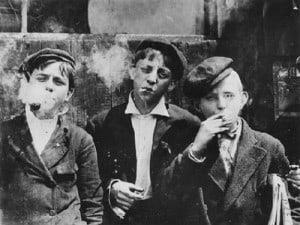
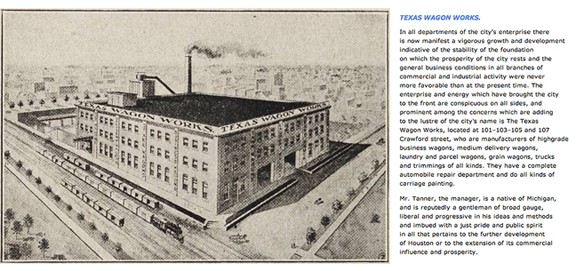
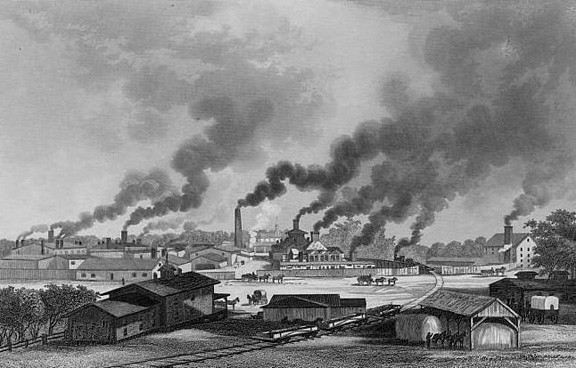
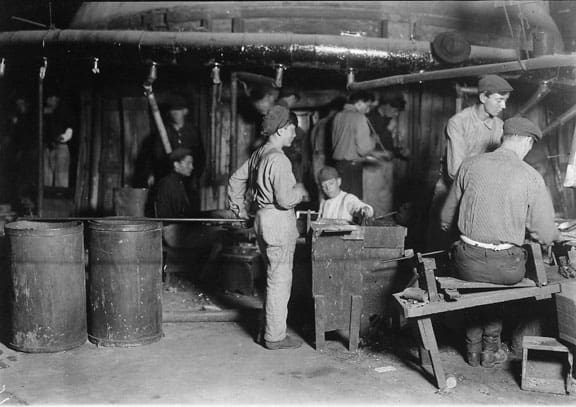
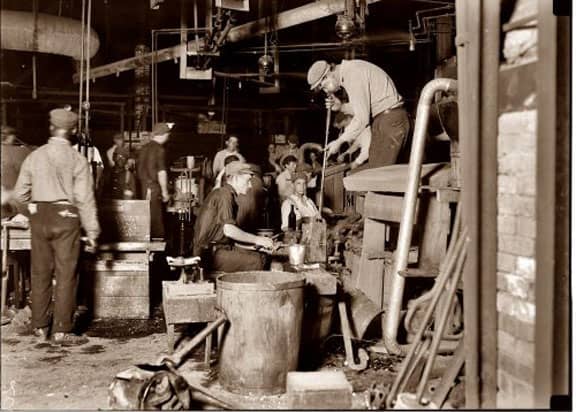
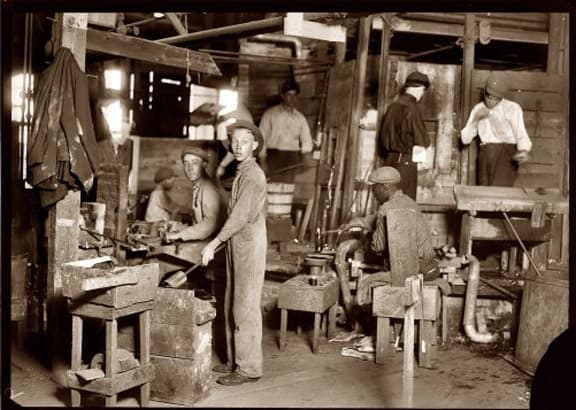

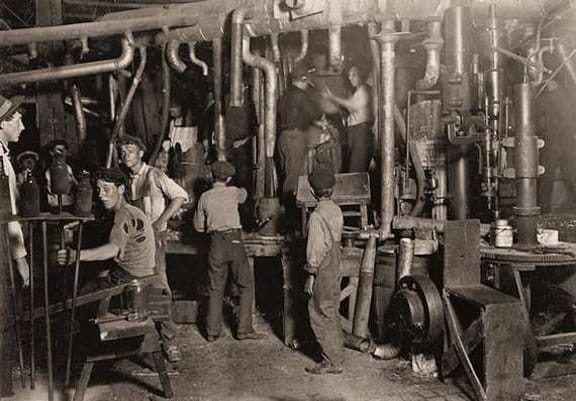
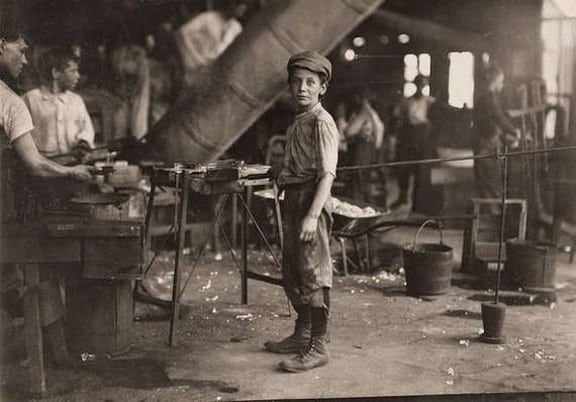
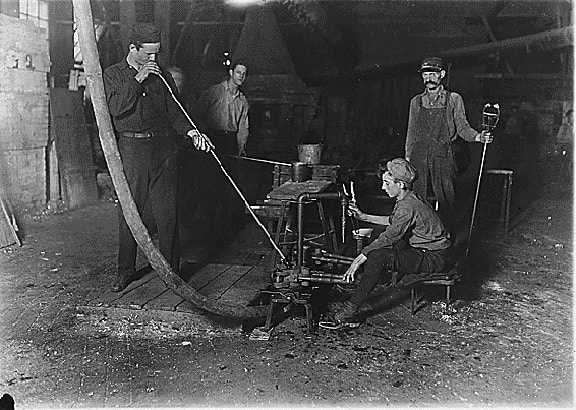
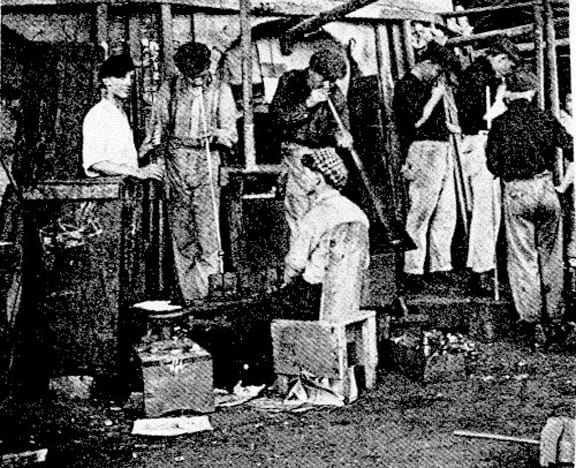
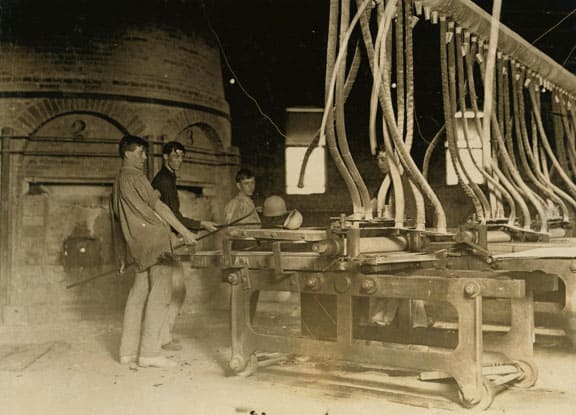
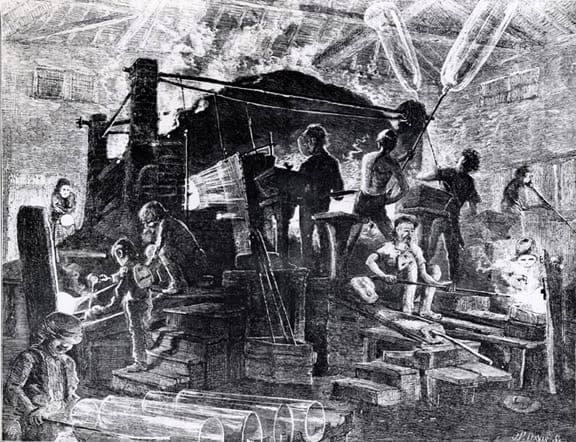
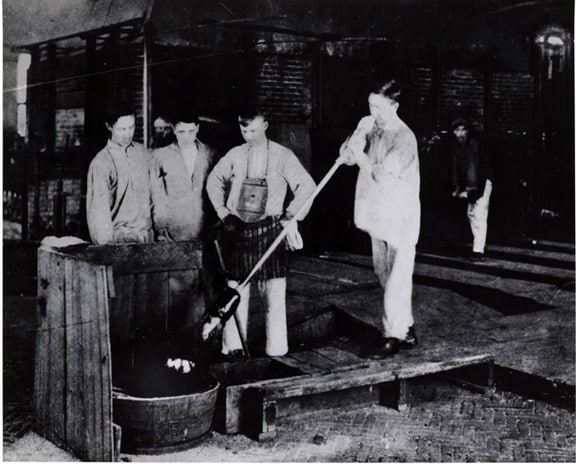
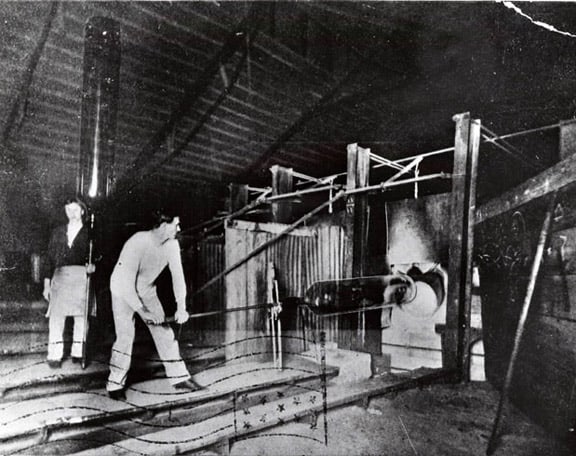
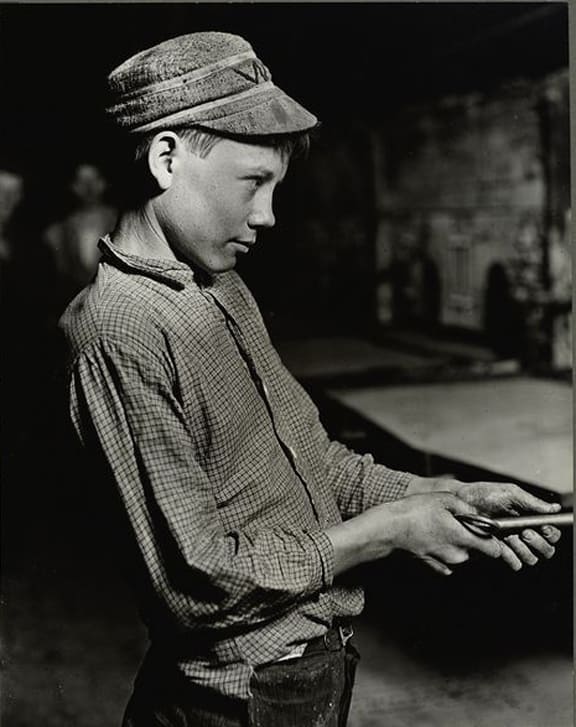
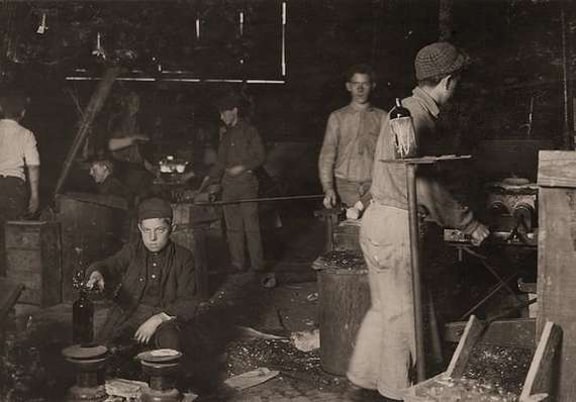
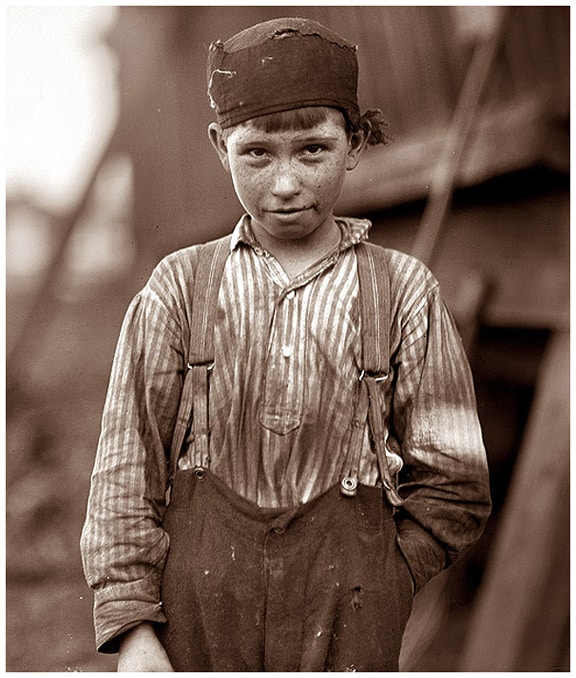
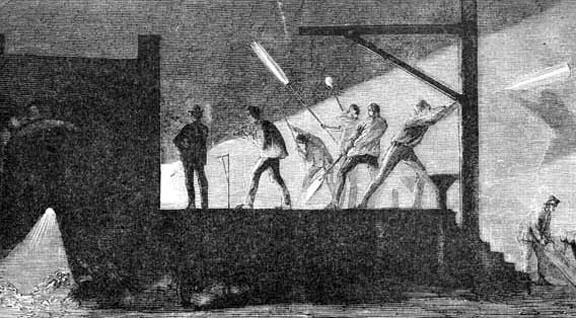
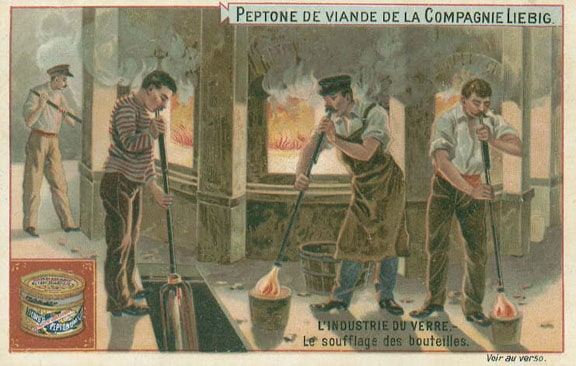
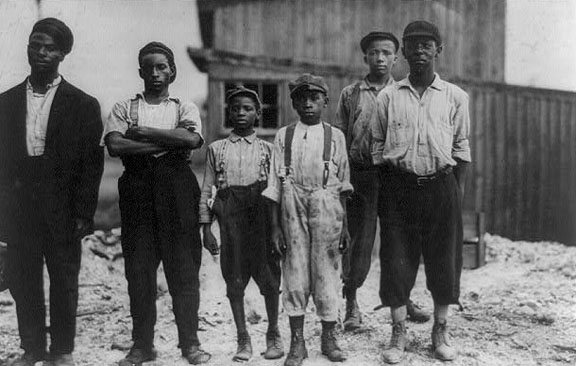
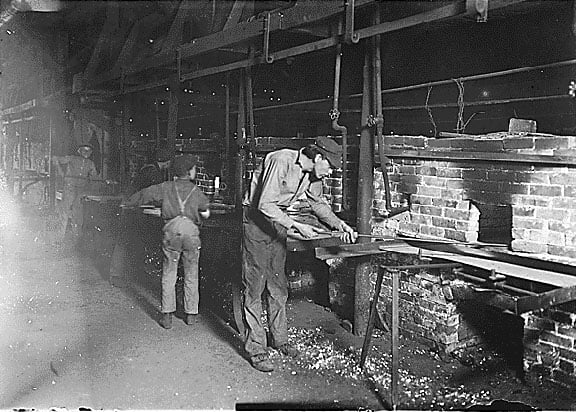
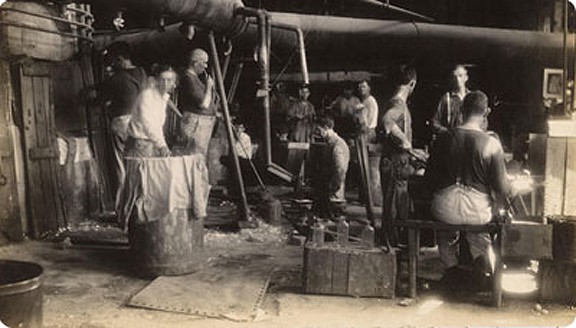
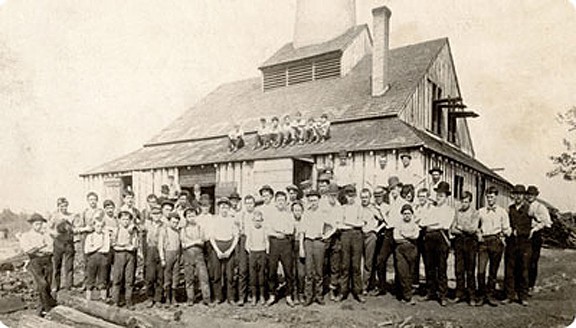
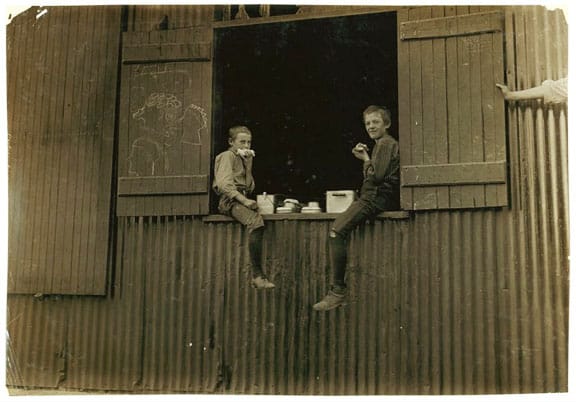
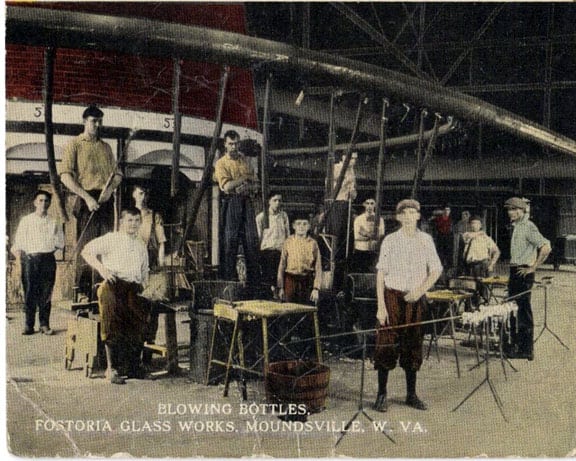
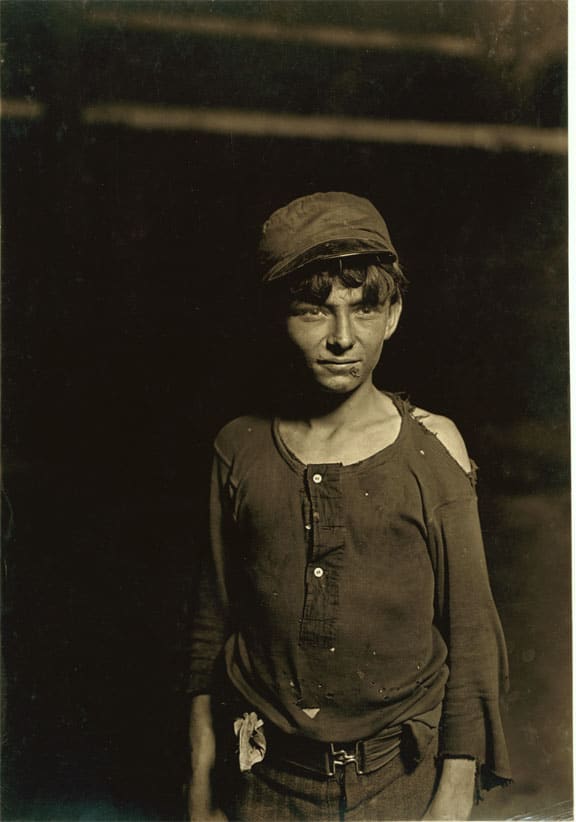
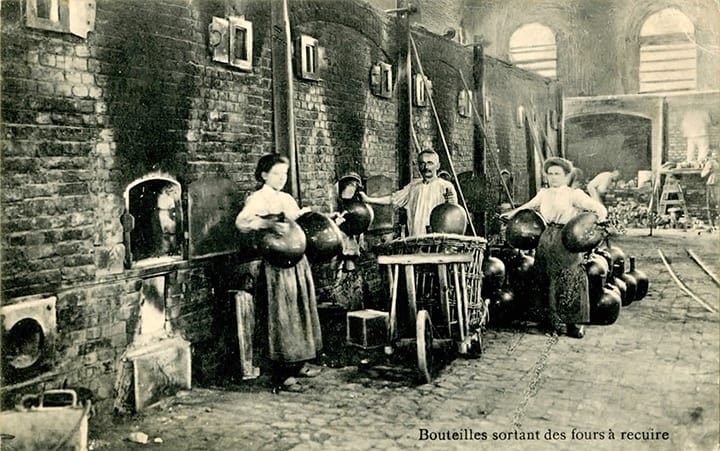






Ferdinand. Wow. Just wow. Apart from Ken Burns’ documentaries I haven’t seem images in a long time that have had such an impact on me. If you had done a pan-and-zoom on that last image like he does, I think I would have done a standing ovation here at my desk. I’m not being silly. The images are terrific, interesting, and moving. Thanks.
great pictures! Personally I think children should have to work a little more then they do, to much is done for them now a days! I wouldn’t send em off all ragity to carry bottles into an annealing oven 12 hours a day though! These pictures really give you an image of the grit my grandfathers generation was raised in… makes me feel a little soft and pudgy actually, having just got out of the shower and gorged myself on an assortment of pre dinner snacks…
Amazing. Never have seen this many pics of early glass workers all at one time. Notice, not an OBESE kid in the bunch!
Jeff: Did you notice how many kids were working at night!
Great piece Boys in Glass Houses. I’ve always understood that bottles were hammered out as fast as they could blow them and flaws meant nothing as long as the bottle sealed with a cork or whatever meaning no 2 are the same. There are collectors who shy away from dips in lips and other flaws thinking that they should be perfect and that’s not how it is. Nice article. Atwoods on it’s way. Mark (Warne)
PS: Mark is sending me a CH Atwoods in a color I may not have. To a color run guy this can not be more exciting!
Am afraid that it makes me a little sad, if not a tad guilty, elevating these orbs of ours to such an elevated position when so many were “born” of such dark, hot, filthy, unhappy circumstances, conditions.